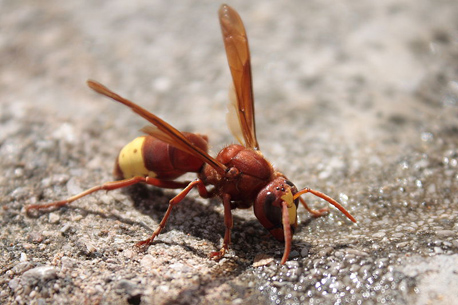- Series:Animals, God’s Design, Transcript English
Proverbs 11:2
“When pride comes, then comes shame; but with the humble is wisdom.”
 How many hornets does it take to power a digital watch? In the case of the Oriental hornet, six hornets can generate enough electricity to run the watch.
How many hornets does it take to power a digital watch? In the case of the Oriental hornet, six hornets can generate enough electricity to run the watch.
Entomologists at Tel Aviv University have been studying Oriental hornets. They have been most interested in the outer skeleton or skin of the hornet. And they have discovered that this cuticle works as a living solar cell. When sunlight hits the hornet’s cuticle, electricity is generated. To prove their point in dramatic fashion, they wired six hornets together in series. That arrangement generated enough electricity to run a digital watch for several seconds. Their research also revealed the fact that the cuticle’s electrical generation is most efficient at the temperatures in which the hornets normally operate. Different layers in the cuticle generate and store electrical current. Voltages have ranged as high as several hundred millivolts and the current has been recorded as high as several tenths of an ampere. In effect, Oriental wasps are living semiconductors!
The researchers now find themselves in the classic situation of finding out how little they know by learning something. They report that they don’t know how the hornet converts its electrical energy into a form it can use. Nor do they know how the cuticle stores the energy or transmits it.
Modern science loves to take pride in its accomplishments. However, every time science investigates God’s seemingly simplest creations, scientists are reminded of their need for humility.
Prayer: Dear Lord Jesus Christ, I stand in humble awe before the works of Your hands! Help me to remember the humility that even the greatest scientists should feel on the presence of Your creation, especially when I feel intimidated by the proud pronouncements of those who claim to have proven that You are not the Creator. Amen.
Author: Paul A. Bartz
REF.: Reese, K.M. 1992. Hornet cuticle may work like organic solar cell. Chemical & Engineering News, Mar. 23. p. 94. Photo: An oriental hornet (Vespa Orientalis). By Matti Paavola (Creative Commons Attribution-Share Alike 3.0 Unported)
© 2020 Creation Moments. All rights reserved.
